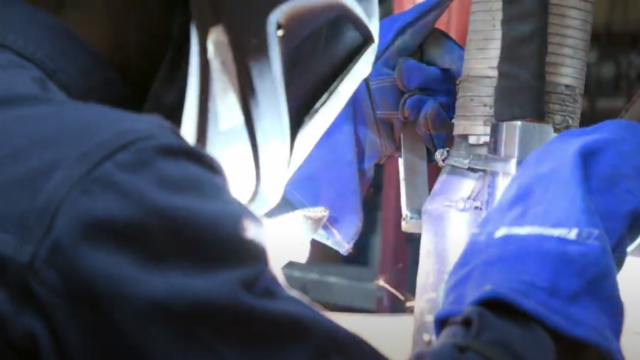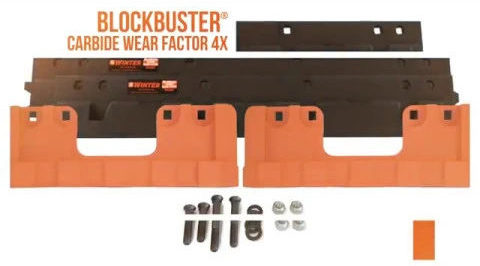Your Recent Search:
How to Keep Your Snow Plow On the Road For Years
December 13, 2017
One of the easiest yet most impactful tactics you can implement as part of your snow and ice removal strategy is regularly scheduled maintenance. Maintenance will reduce the chances of breakdowns during the season and will give way to significant cost savings. Educate yourself and your snow removal team about the tenets of maintenance. Here are a few key best practices.
Know what’s in your way.
Take a drive through your usual route and note any large, immovable objects or any landscaping objects. You can do this by using driveway markers, which are inexpensive to purchase. By marking the territory, you’ll be able to see the boundaries of the area you need to plow, even in deep snow. You’ll also be alerted to anything lurking below the snow that could damage your plow or cutting edge. Once you know where they are, be sure you’re using snow plow blades that maneuver over these road obstructions.
A cleaning and a coat of paint.
It’s not exactly a secret that salt has a corrosive effect on snow plows and cutting edges. Water is also just as damaging. When salty water meets raw metal, it oxidizes, creating rust. It’s likely that there is a powder coating on your snow plow’s metal components. This performs like a barrier between the metal and salty water. If there are any scratches in the barrier, this also increases the chances of rusting. If your crew regularly paints over these scratches, rusting is less likely to occur. Remember, maintenance is key and rust is the enemy. Clear the salt and chemicals from all plow components after every snow event.
Brush up.
Before installing your cutting edge, use a wire brush to remove rust and debris from your plow. This keeps the area clean and supports better cutting edge performance over time,
Don’t be a flake.
If you have a snow plow with chrome lift rods, rust can cause them to flake. Flakes will migrate up into the plow’s lift cylinder, which means expensive fixes for your equipment. The best defense against this is regular lubrication of the chrome rods, which you can accomplish by collapsing them.
Grease is good.
Ensure that all electrical connections are coated with non-conductive dielectric grease, which helps seal electrical connections and protect them from moisture. Moisture in electrical connections can lead to serious damage to the snow plow’s electrical system. Perform this task mid-season to prevent problems during weather events.
Down the drain.
It’s vital to drain the snow plow pump’s hydraulic fluid. Over time, condensation can accumulate inside the pump as it’s being used. Allowing the liquid to stay there creates oxidation in the pump’s reservoir, rusting its interior. Additionally, be sure to calibrate your hydraulic system multiple times each season.
Metal fatigue.
Harsh weather conditions and constant stress can cause your plow to wear down over time. Check the mountings, frames, and cutting edges to see if there’s any damage. Examine all the iron-based components (including welds and re-torque nuts and bolts) and note any cracks.
Loose parts can lead to loss.
Not only can loose parts affect the performance of your plow, they create a very dangerous situation for anyone operating the machine. Perform visual inspections daily during the snow season. Increase those inspections to multiple times a day during very heavy weather systems. Here are a few things to check during a visual inspection:
- Check trip springs for proper tension. Are they tight and intact?
- Check plow bolts. Are they loose in any way?
- Ensure mounting points are in good condition. Are there any cracks or chips? Are the fasteners secure and in place?
- Determine if cutting edges are showing signs of wear and tear. If so, replace these ASAP.
- Check to see if the snow plow’s wear shoes are worn down. Also ensure that all the nuts and bolts are in place.
Make maintenance a priority.
It is recommended that pre-season maintenance be coupled with continual maintenance. Simple tasks, such as monitoring the snow plow pump’s oil level, hydraulic or electric system, clearing rust, checking plow bolts and calibrating your hydraulic system can make all the difference.
Subscribe to our blog
Get notified when we post a new article
"*" indicates required fields


